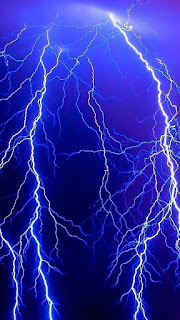The Second Law of Thermodynamics: Entropy and the Arrow of Time
The Second Law of Thermodynamics is a profound principle that governs the behaviour of energy in our universe. It introduces the concept of entropy, which measures the degree of disorder or randomness within a system. In this blog, we will embark on a fascinating journey to explore the intricacies of the Second Law of Thermodynamics, unravelling the connection between entropy, energy flow, and the concept of the arrow of time. Join us as we delve into the captivating world of entropy and discover how it shapes our understanding of the universe.
Entropy: Unraveling Disorder and Randomness: Begin by understanding the concept of entropy, a fundamental quantity in thermodynamics. Explore how entropy is related to the distribution and arrangement of energy within a system. Delve into the microscopic interpretation of entropy and learn about statistical mechanics, which provides a framework for understanding the behaviour of large systems of particles.
The Second Law: Increase in Entropy: The Second Law of Thermodynamics states that the entropy of an isolated system tends to increase over time. Uncover the reasons behind this phenomenon and explore the implications of the law. Discuss how this increase in entropy leads to irreversible processes and the directionality of time, often referred to as the arrow of time.
Reversibility, Irreversibility, and Time's Arrow: Dive into the concept of reversibility and irreversibility in thermodynamics. Understand why certain processes are reversible, while others are irreversible. Examine the connection between irreversibility and the arrow of time, which dictates the perceived direction of time flow in our everyday experiences.
Entropy and Energy Utilization: Discover how the increase in entropy affects the efficiency of energy utilization in various systems. Explore the concept of wasted energy and the limitations imposed by the Second Law. Learn about the Carnot cycle, an idealized heat engine that sets a theoretical limit on the efficiency of energy conversion.
Entropy and the Universe: Contemplate the role of entropy in the broader context of the universe. Discuss concepts such as the heat death of the universe, where all energy becomes evenly distributed, resulting in maximum entropy. Explore the connections between the expansion of the universe, the Big Bang, and the evolution of entropy.
Entropy in Everyday Life: Observe the presence of entropy in our daily lives. Discuss examples of how entropy manifests in various processes, such as the dissipation of energy in mechanical systems, the decay of food, and the degradation of information. Gain a deeper appreciation for the pervasive nature of entropy and its impact on our surroundings.
The Second Law of Thermodynamics, with its concept of entropy, provides a profound insight into the behaviour of energy in our universe. It reveals the irreversible nature of many processes and establishes the arrow of time, defining the perceived direction of time flow. Entropy plays a pivotal role in energy utilization, irreversibility, and the ultimate fate of the universe. By understanding the Second Law, we gain a deeper appreciation for the delicate balance between order and disorder, shedding light on the fundamental workings of our physical reality.

Comments
Post a Comment